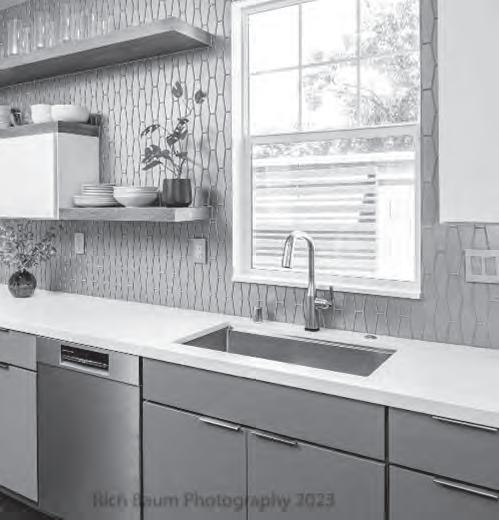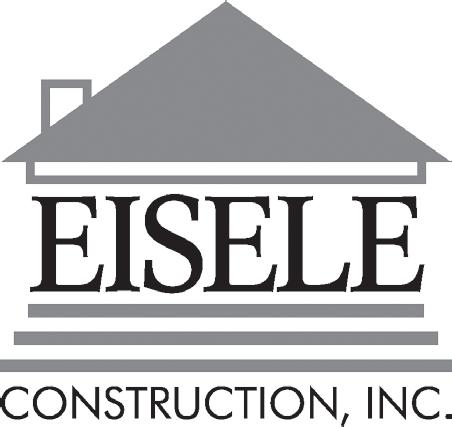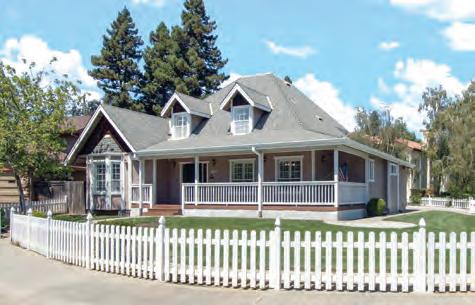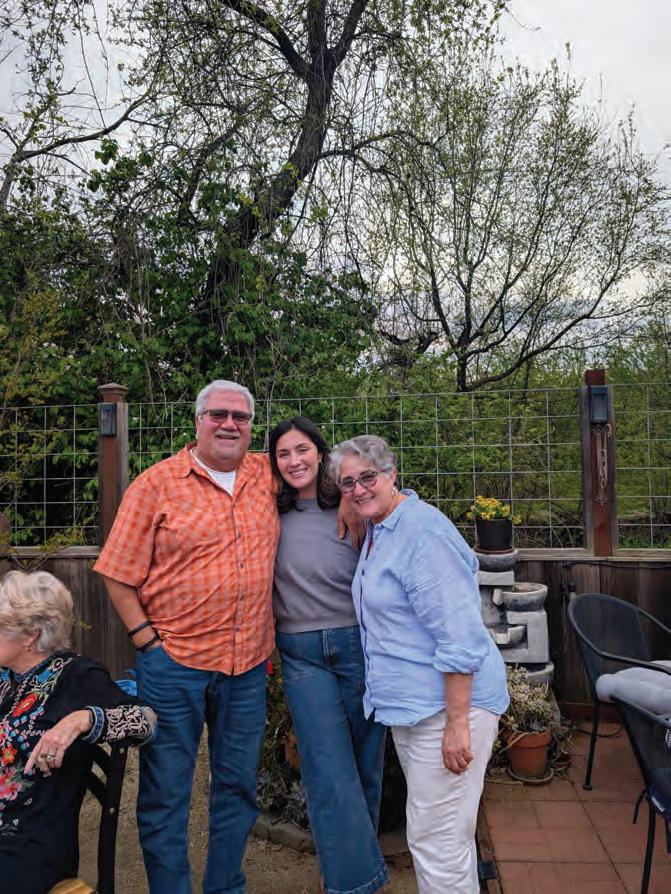









































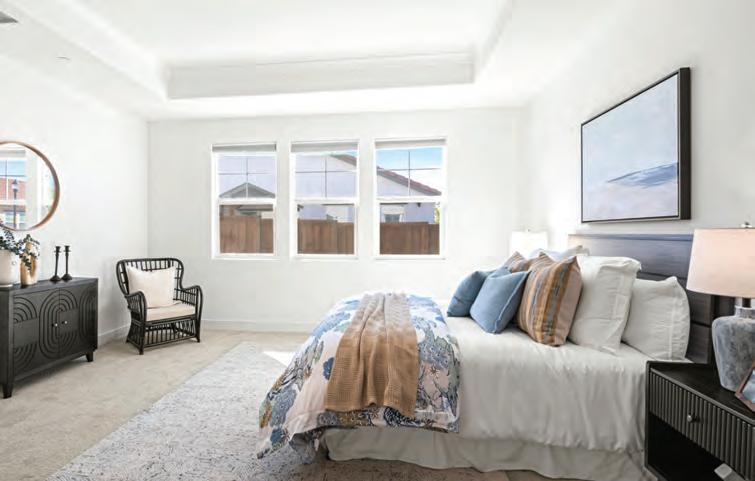














































The modern real estate market has led millions of aspiring home buyers to reconsider their approach to buying a home. Low inventory has led to high home prices. When paired with mortgage interest rates that have remained north of 6% for years, the high sticker price of homes has made many buyers wonder if homeownership is simply beyond their means.
It’s impossible to know if or when home prices will come down, but some buyers have chosen to seek homes that can accommodate multiple generations. According to the Pew Research Center, the share of multigenerational homes rose from 7% in 1971 to 18% in 2021. A multitude of factors have contributed to that increase, and housing affordability is one such variable. In 2024, researchers studying multigenerational households at the Wharton School at the University of Pennsylvania noted that housing affordability declined considerably in recent years but also had been on the decline for decades. As homes become less affordable, the number of multigenerational households tends to increase, and that’s something modern buyers can keep in mind as they look for a home.
In-law suites that accommodate multigenerational households can provide a pathway to homeownership for buyers who otherwise may be priced out of the market. Buyers considering homes with an in-law suite or those who want to add one to their existing homes can familiarize themselves with these convenient and potentially costsaving features.
Whether you’re looking for a home with an in-law suite or hoping to add one on to your exist ing home, a separate entrance for suite residents can allow them to come and go as they please. That sense of independence is sig nificant. In addition, a separate entrance can make a home seem less like a multigenerational res idence, which at times can feel crowded, and more like a singlegeneration home. That can afford all residents a little more peace and quiet in a typical day.
As with any addition to a home, adding an in-law suite to an exist ing home is likely to result in an increase in homeowners’ prop erty taxes. The amount of that increase is contingent upon variables unique to each resi dence, like location and the size of the addition. When shopping for homes with existing in-law suites, buyers can request existing tax information so they are not surprised by the number like they might be if they add on to an existing home. Despite that, it might still be in prospective buyers’ best interest to add on to an existing property and pay the additional taxes than it would to buy a new home.
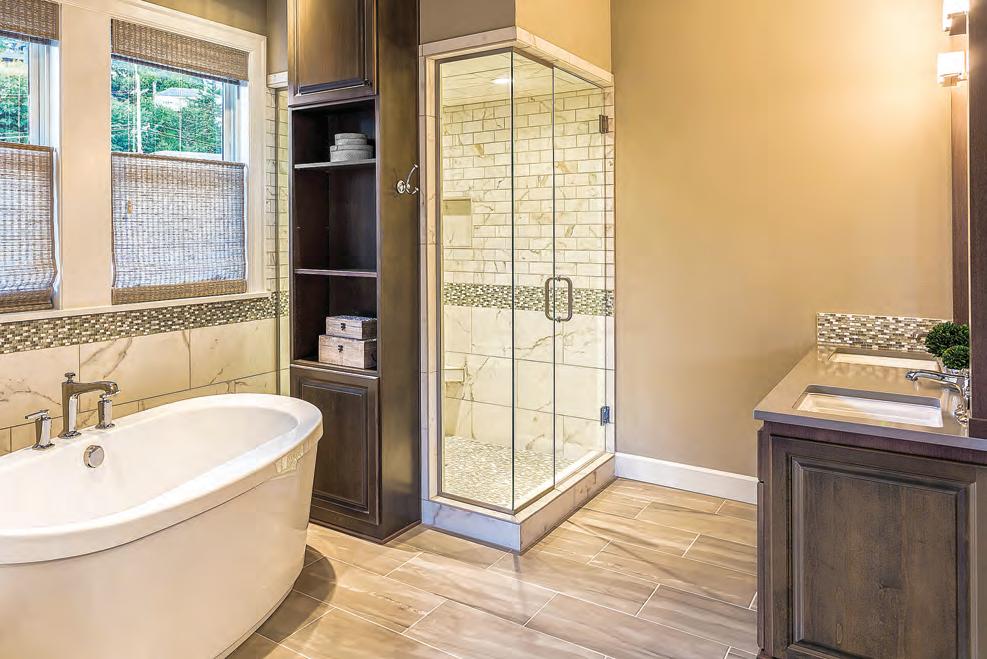
and a kitchen or kitchenette. If everyone in a multigenerational household is forced to use the same bathrooms, washers and dryers, and kitchens, then the home might begin to feel cramped rather quickly.
An in-law suite should include its own private bathroom, a washroom for a washer and dryer
Though it might not affect the ambiance within the in-law suite itself, an off-street parking spot is a convenience residents will appreciate. Such a space will allow residents to come and go as they please and save them the headache of moving their
vehicles for snow plows and street cleaners.
In-law suites could be an in-demand feature as more
homeowners and aspiring buyers seek to reduce housing costs by embracing multigenerational living arrangements.



Q: I have lived in Califor nia for 24 years, bought two homes and never heard about a Title 24 report. We bought our brand-new home in 2014.
Three months ago, I submitted a request to the builder about the windows in my bedroom being different colors (tints). Our home is 1,800 square feet and has 28 windows. The builder said our windows were Low-E, but then the glass company that installed the windows said they are just clear glass. This began the process of me wanting to know what was supposed to be installed, which as I investi gated is all documented in the Title 24 report.
Even though the law man dates that this report and other documents are to be provided to the homeowner, apparently nothing happens if the builder doesn’t do that. I have made requests to the builder and the city Building Department and their responses are “we are unable to locate those documents.” The problem is my home does not have any of the energy-efficient items that were marketed or stated in our purchase contract.

Energy Efficiency Standards for Residential and Nonresidential Buildings, which is why people
Title 24 is extremely complicated and few people, certainly not me, know the myriads details contained in it. But, in a nutshell, it is a section which mandates that new buildings be built with -
Can you provide any suggestions on how to get the builder and the city Building Department to be accountable for not building my home to the specifications that were reviewed and approved? I would also like to ask if you could write an article to help educate homeowners and homebuyers of the Title 24 report.
A: I don’t know if I’ve ever had a Title 24 question for this column so yours may be a first.
Title 24 is the name of a section in the California Code of Regulations. Its real name is The
construction.
It works something like this: You calculate the square footage of the building. You then add together the “R value,” or insulation value, of the roof, walls, floor, windows, exterior doors, etc. That figure has to equal or be superior to the Title 24 minimum.
Because the total value is a combination of so many components, a builder can, for example, use windows of a higher R value on the part of the house that’s most exposed to the sun and then use cheaper insulation on the exterior walls. You can mix and match so long as your total number comes out right. Builders will typically try to find the least expensive combination to get to the right number.
Title 24 covers other things like heating and air condition-
See Jones, Page 4








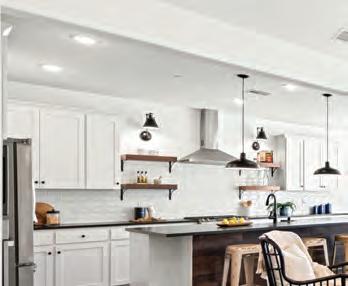






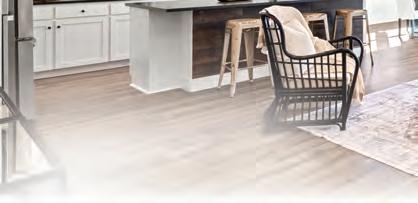
Beautiful Modern Farmhouse Duoro model in Four Seasons 55+ Community! Model home worthy and move-in ready! This home offers easy, elegant living on a desirable corner lot. The open-concept kitchen features slate countertops, upgraded appliances, and flows seamlessly to the dining and family areas. Sliding doors open to a covered patio and lowmaintenance backyard, perfect for entertaining or relaxing. The primary suite overlooks the backyard and includes dual sinks and a tall walk-in shower. A guest bedroom sits at the front of the home along with a flex room enhanced by barn doors. Additional highlights include luxury vinyl plank flooring and energy-efficient solar. Enjoy resort-style amenities with a clubhouse, pool, fitness center, and social activities that make it easy to stay active and connected.
O ered at $644,000


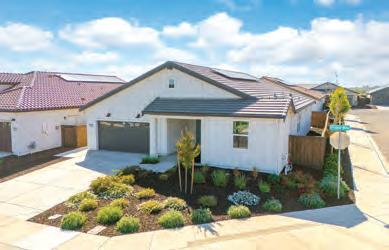
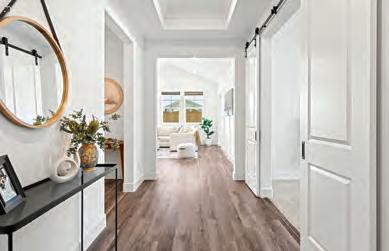

Juli Paschal, DRE #1946153
707.592.2124
Juli.Paschal@kappelgateway.com SolanoHomes4You.com


Imagine stepping out of a hot shower on a cold winter morning, and instead of bracing for the icy jolt of tile underfoot, you’re greeted by warm, gentle heat rising from the floor.
For many homeowners, radiant bathroom flooring isn’t just a luxury; it’s one of those small daily comforts that quietly change how you experience your home. And with rising interest in energy efficiency and smart home upgrades, it’s no surprise that more people are considering radiant floor heating as a serious enhancement to traditional HVAC systems.
Radiant floor heating works by installing a heating element directly beneath your bathroom floor, warming the space from the ground up. There are two main types: electric systems, which use thin mats embedded with heated cables, and hydronic systems, which circulate hot water through tubes beneath the floor. Both deliver a slow, steady heat that evenly warms the entire room, with no vents, drafts or cold corners.
Electric systems are generally easier to install in small areas and cost between $8 and $15 per square foot. Hydronic systems can range from $6 to $20 per square foot and are often more economical for larger or whole-home installations.
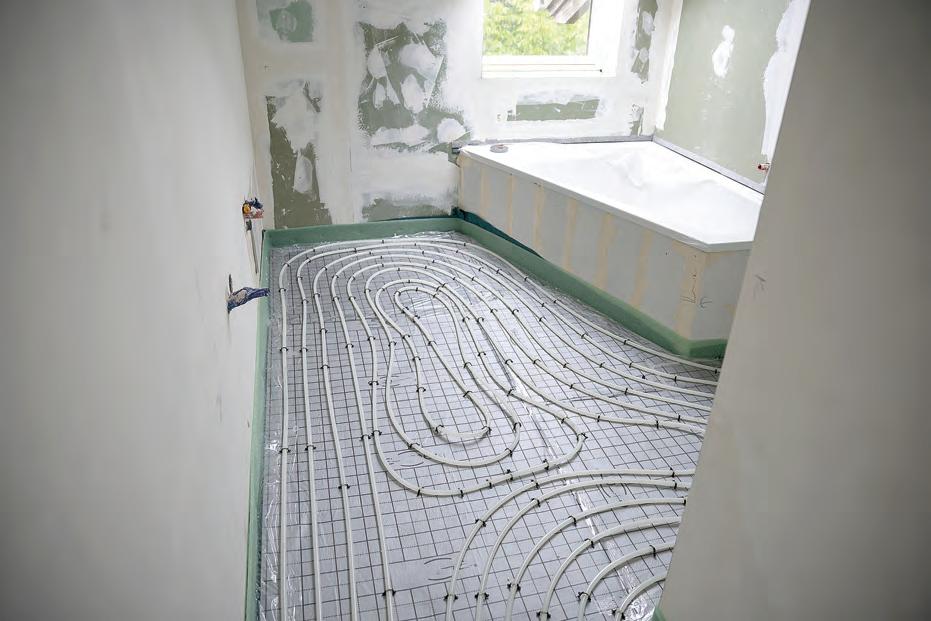
Special tubing laid beneath floors, seen here during installation, provides the heat for radiant systems.
temperature consistent and comfortable from bottom to top. It’s also surprisingly efficient in small spaces like bathrooms, especially when paired with a programmable thermostat. Radiant systems often use less energy than conventional heating systems, and many homeowners report noticeable savings on utility bills over time.
One of the biggest advantages of radiant heat is its even distribution. Traditional forced-air systems tend to push warm air quickly into a space and then shut off, which often leaves the ceiling toasty while your feet stay cold. Radiant heat, on the other hand, warms the entire surface area of the floor and naturally radiates upward, keeping the
Beyond the efficiency, radiant floor heating offers an impressive lifespan with very little maintenance. Once installed properly, a radiant system can last up to 40 years, which is nearly three times longer than the average forcedair furnace. There are no filters to replace, no ducts to clean and no noisy components. Everything stays tucked away under the floor, silent
and invisible, which is especially appealing in bathrooms where space is limited and design matters.
Of course, there are tradeoffs. The most significant hurdle for many homeowners is the installation process. To add radiant heat, you’ll need to remove your existing flooring so the system can be placed underneath, which adds labor time and cost. For hydronic systems, you may also need a concrete or mortar base to hold the tubing in place, which can further complicate installation. Repairs, while rare, can be tricky. If something goes wrong, you’ll need a pro to locate and fix the issue, and that often means pulling up flooring again.
Then there’s the price tag. Installing a radiant system
From Page 3
ing units too, but when you talk Title 24 you’re usually referring to the building’s insulation value.
In order to take out a building permit, a builder, regardless of whether he’s building a single house or a whole subdivision, must present a Title 24 report to the building department as part of their approval process.
You said that your house “doesn’t have any of the energy efficient items that were marketed …” How do you know that?
You’ve noticed that the windows in question appear tinted. The builder says they’re “Low E” and the window company says they’re not. Low E (standing for “low emissivity”) is a coating and can be tested.
As for your question; I’d be very surprised if the builder didn’t install the type of insulation, windows, etc. called for by his Title 24 calc’s, which were approved by the building department. Inspectors check packaging and receipts for such items to ensure compliance with the plans.
in a bathroom typically costs between $1,700 and $6,000. That’s a steep upfront cost compared to other heating methods, but many homeowners find the long-term savings and comfort make it worthwhile.
Still, if you’re already planning to renovate your bathroom, radiant heat is a smart upgrade to factor in. The installation is easiest when the flooring is already being replaced, and the added comfort and efficiency can make your bathroom feel like a high-end spa every day. Plus, it’s a strong selling point that can boost your home’s value down the road.
Tweet your home care questions with #AskingAngi and we’ll try to answer them in a future column.
If the builder advertised energy saving features that were above and beyond what the law requires and didn’t provide them, then you may have a breach of contract claim. Unfortunately, since you bought your home in 2001, you’re probably way past the statute of limitations for such a suit.
What I can tell you is that the building department, as a matter of law, is not responsible to you for the home’s construction. It’s a governmental agency whose only obligation is to the government it works for, not individual homeowners.
Regarding the Title 24 report, it should be in the building department’s file. But, if it’s not, I’m afraid I can’t think of a sure-fire way for you to get your hands on it.
Tim Jones, Esq., is a real estate attorney in Fairfield. If you have any real estate questions you would like answered in this column, you can contact him at AllThingsReal Estate@TJones-Law.com.

2025 Homeowner Regrets Survey found that owners with regrets most often cited maintenance and other “hidden costs” being more expensive than they expected, at 42%.
•Other regrets cited included buying too small of a house (21%), the mortgage payment being too high (16%) and overpaying (15%).
Buyer’s remorse is especially common among first-time homebuyers. It’s easy to begin second-guessing the decision to spend a huge chunk of money – or more likely, borrow a huge chunk of money in the form of a mortgage. It’s a big life change, and one one that will be with you for a long time, too.
Buyers could feel the sting of regret for any number of reasons. Here are some thoughts that might kick in once you get the keys:
regret about their purchase, the most common being that the home requires too much maintenance.
•Similarly, Bankrate’s
•“I paid too much”: This thought often hits a homebuyer at or right before the closing, when they see, laid out in a single statement, all the closing costs they have to cover, plus the ongoing expenses (like mortgage payments and property taxes) they’re now obligated to pay. Or maybe they got caught up in a bidding war and, in the joy of victory, didn’t fully understand how far over budget they had gone.
•“I made the wrong
Freddie and Fannie talk a good game about their mission to expand homeownership and making the American Dream more accessible and affordable, but this week I ran into the dumbest underwriting guideline ever that crushes affordability.
My clients found the perfect 10-acre property and the seller accepted their offer for $1 million. The plan was to put down $200,000 and obtain a new 30-year fixed-rate loan of $800,000 at a 6% rate. The 50-year-old couple are going to live in one house, and their 75-year-old parents are going to live in the other home on the property.

My 780 FICO score clients are easily approved for this loan but only two of the 100 loan sources I have will touch this property with a 10-foot pole because there are two manufactured homes on the parcel.
One of the homes is a 1,700-square-foot double-wide that was built in 1995 and planted on the property on a permanent foundation with a 433-A recorded in that same year. The second house is 2,200 square feet and 20 years old. The county gave the sellers written permission and permits to add this home as an accessory dwelling unit in 2005.
Each house has its own well and septic system. The county told me this week that the zoning rules changed in 2017 and now the second home – the ADU – is limited to only 1,200 square feet but that because this was totally legal and approved 20 years ago, they would issue a “burn down letter,” which means that if one or both of the homes were to burn down, the owners could replace the two homes at the same size.
FHA will allow two manufactured homes on one lot but the FHA maximum loan amount in this county is only $524,000. A local regional bank agreed to do the loan with 30% to 35% down at a rate around 7%, but this bank does not cooperate with mortgage brokers so now I cannot do the loan for my long-term clients. The rate is higher, and now my clients need to find
See Porter, Page 11
From Page 5
choice”: It’s rare that a house ticks every item on your checklist, with no compromises. Still, if someone buys a home that feels too big, or too small, or doesn’t have something they really wanted, buyer’s remorse can set in. It often compounds if they jumped at the first place they saw, were under pressure to find a place or had a difficult choice between two homes.
•“I don’t like my new neighborhood”: Maybe the area lacks certain amenities, or is noisy at night, or has more traffic than the buyer realized, making commuting to work trickier. While the house itself can look great, the area might leave something to be desired.
•“I can’t keep up with the maintenance”: Whether it’s a need for unexpected repairs or the ongoing drudgery of chores, some buyers are overwhelmed by continuous home upkeep.
•“I miss my previous home”: Sometimes the source of buyer’s remorse has nothing to do with the new purchase at all, but simply a sense of nostalgia for an old house, neighborhood or lifestyle.
Buyer’s remorse is often a natural part of the homebuying process, because such a big investment is involved. But there are ways you can manage your expectations to limit feelings of regret.
1. Get preapproved for a mortgage
Going through the preapproval process before you even start househunting takes away some of the financial question marks by giving you a hard number that a lender is likely willing to loan you. You can base your homebuying budget and your price range on that amount (but resist the urge to spend the full amount just because you can).
2. Slow down your search
No matter how rushed you might feel in a competitive market, remember that this decision is going to impact your life, and your finances, for the longterm – many years, or even decades. Homes are staying on the market for a bit longer now than they used to, and buyers have a bit more leverage, so take
your time. Don’t be afraid to ask questions. And remember that, if there’s nothing out there that suits your needs right now, it’s OK to wait. You’re better off putting things on hold for a bit than you would be buying the wrong house.
3. Work with a real estate agent you trust
A knowledgeable local real estate agent can be your best friend on your homebuying journey, both in finding a house and in avoiding buyer’s remorse. Agents are licensed experts who under-
Coping with buyer’s remorse can be complicated, and your options can depend on when in the homebuying process you start to have doubts.
stand what’s available in the area that meets your criteria and budget – they can answer your questions and warn you if you’re making a rash or costly decision that you might regret. However, don’t let yourself feel pressured to make a deal you don’t feel good about. You know what’s best for you.
4. Get a home inspection
A professional home inspector performs an in-person evaluation of a home’s condition. Their findings can help you avoid pricey surprises – if repairs are needed, you can budget for them or ask the seller to help cover the cost. If you have an inspection contingency in your contract, major problems can even be an excuse to back out of the deal.
5. Negotiate your contract carefully
Make sure your real estate agent or attorney includes contingency clauses in your contract. These can allow you to cancel the purchase if certain circumstances are not met. Be sure you understand exactly what fixtures come with the home as well, and identify each item that you want specifically. Any costs you’d like the seller to cover should be spelled out in the contract, too.
Coping with buyer’s remorse can be complicated, and your options can depend on when in the homebuying process you start to have doubts.
If you’re still in negotiations and haven’t signed anything yet, that’s easy: You can simply walk away. You can also work with your agent or a real
estate attorney (or both) to insert contingency clauses into the contract that make you feel more comfortable. If you fear a home inspection will uncover major issues, for example, an inspection clause can give you room to back out without much hassle if problems are, in fact, found.
Once you’re further along in the buying process, it gets more challenging. For example, if you’re already in contract and then find another property you like better, you will likely have to forfeit your earnest money deposit to turn your remorse into a canceled contract. Given that earnest money typically amounts to about 1% of the home’s price, that can be thousands of dollars lost.
When you already own the home, but now wish you didn’t, the situation changes. If a specific problem is the issue – for example, if the basement floods every time it rains – you may have a legal claim against the seller if you can prove that they knew about the issue and deliberately failed to disclose it to you. This can get complicated, however, and laws about your right to pursue legal action vary by state. If you just generally feel like you made a mistake, it’s best to look into ways to make things more bearable (like soundproofing or renovations), at least until you’re able to sell without financial ramifications.
It’s natural to experience some level of buyer’s remorse when you’re buying a home. After all, it might be the single biggest purchase of your lifetime, and you’re taking on a huge amount of responsibility. But if you plan carefully and enlist the right help, your homebuyer’s remorse can be no more than a fleeting regret.
•Buyer’s remorse is a feeling of regret or anxiety after making a purchase. For homebuyers, it means they regret buying their house.
•People might feel homebuyer’s remorse if they come to believe they overpaid or dislike the location once they move in, for example.
•Careful planning and working with an agent you trust can help make sure you don’t regret your decision.

ABOVE: Heavy rains along a slope created the opportunity for The Garden Guy to create a “River of Caladiums” in West Georgia. Heart to Heart Rose Glow caladiums were planted in areas where loamy soil was washed into a miniature alluvial-like flood plain. NORMAN WINTER/TNS PHOTOS

The past two years have seen rainstorms that were real gully washers at my house in West Georgia. Consequently, my dry creek area with daylilies saw the rocks moving downhill. But the water movement opened the door for one of the most enjoyable gardening projects in years.

The storms created a winding path for water to relocate to the street.
As it winds downward, it goes past azaleas, hydrangeas and bush type conifers as well as native pines and junipers. As it carved its way, loamy topsoil was moved left or right creating perfect beds for planting. These were like alluvial flood plains in miniature. The Garden Guy really had a

Crested Surf Crested Japanese Painted Ferns had been needing a partner. Heart to Heart Splash of Wine caladiums were selected to add that special pizzazz.
heart for this. To be more exact, I had a lot of hearts thanks to Heart to Heart caladiums. These
See Winter, Page 10


















































































From Page 7
bulbs were a late acquisition. I chose to plant each one in a leftover quart pot I had in the storeroom.
My thought was that this would allow me to place a growing plant in the exact spot I wanted. I admit sometimes when I plant bulbs directly in the soil I can get a little haphazard. Using a Twist ‘n Plant auger on a cordless drill makes planting quart containers just as fast and easy as planting jumbo bulbs.
In each miniature flood plain, I planted a dozen caladiums of all the same variety to give a mass planting look. In one area I did let Heart to Heart Rose Glow and Heart to Heart Radiance have a slight merge or overlap.
Along this “river of cala-
diums” I have three gold chamaecyparis or false cypress and three golden needled Fluffy arborvitae. The golden chartreuse of the conifers really contrasts with the colorful leaves of the Heart to Heart caladiums.
Heart to Heart Raspberry
Moon caladium is a three-time Top Performer award winner at the Cincinnati Zoo and Botanical Gardens. It is a part shade to shade selection that helps echo the chartreuse with its own contribution of soft lime and yet adds contrast too with the raspberry splotches.
Heart to Heart Rose Glow caladium is a sun or shade selection and prolific in the quantity of leaves produced. Rose Glow is a most appropriate name in that it does seem to glow, even more so with chartreuse partners in proximity.
Before I knew I was going to have a miniature waterflow, I had planted a few informal
sweeps of Crested Surf Japanese painted ferns. These ferns are gorgeous with gray green to silver fronds and burgundy stems. I gave them Heart to Heart Splash of Wine caladiums as partners and feel like I may have hit a winner.
The one thing I wasn’t counting on in the project was falling head over heels for Heart to Heart Radiance caladium. This variety too is a multi-year award winner at the Cincinnati Zoo and Botanical Gardens.
The Heart to Heart Radiance caladium leaves are large and electrifying in color. They have some hot pink, white, green and sizzling red veins. The chartreuse conifers create a party atmosphere, and adding the best summer/fall bloom of azaleas was like an October garden fest.
From the first leaf to the first frost, Heart to Heart caladiums are so beautiful, easy



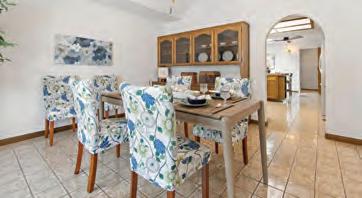
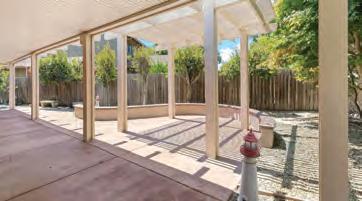
and trouble-free. When I planted my bulbs in containers, a Heart to Heart Radiance bulb got away from me. I didn’t know I had lost one. A couple of weeks later it came up in the bucket. I took the little soilless plant to the backyard and planted it in a glazed AquaPot by a Hollywood Hibiscus VIP.
When I posted the photo on my Facebook page, I quickly got a complaint that you could not do that as the hibiscus is a sun plant and the caladium a low-light plant. So, a reminder to read your varietal tags as some Heart to Heart caladiums can also grow in the sun.
Norman Winter is a horticulturist, garden speaker and author of “Captivating Combinations: Color and Style in the Garden.” Follow him on Facebook @NormanWinterTheGardenGuy. He receives complimentary plants to review from the companies he covers.

This photo is a reminder that some Heart to Heart caladiums can grow in full sun or shade so read your tags. This Heart to Heart Radiance was lost but sprouted without soil and later placed next to a Hollywood Hibiscus VIP.
From Page 6
an extra $100,000 to $150,000 for the down payment.
Everyone will do a loan on a stickbuilt home with a manufactured ADU on the lot but pretty much no one, including credit unions, will do a loan on a property that has two manufactured homes on the land. This makes no sense to me or anyone that I have asked.
I remember doing a loan on a 5-year-old large manufactured home a few years ago that had a small 50-year-old stick-built house on the property. The new 2,800 square foot triple-wide manufactured home became the main house and the old original 1,100 square foot ranch style home became the legal ADU. I got that loan through Fannie somehow, but nowadays if you want a great rate and good terms, fuhgeddaboudit if the property has a manufactured home for you and one for your grandma out back.
FYI folks, a 433-A is what is recorded when a manufactured home is converted, with permits, from personal property to real estate property. Once the 433-A is recorded and the house is attached on a permanent foundation, the home is no longer considered chattel, and the taxing authority changes from the California Department of Housing and Community Development to the county tax assessor and collector.
In summary, this rule makes it almost impossible for two generations to live in two manufactured homes on one parcel. It makes no sense because manufactured homes today are built with the same quality as a site-built home. It is not riskier to Fannie and Freddie, as two homes are better than one.
Jim Porter, NMLS No. 276412, is the branch manager and senior loan adviser of Solano Mortgage, NMLS No. 1515497, a division of American Pacific Mortgage Corporation, NMLS No. 1850, licensed in California by the Department of Financial Protection and Innovation under the CRMLA / Equal Housing Opportunity. Jim can be reached at 707-449-4777.
The desire to bring the outdoors in continues to inspire homeowners and designers alike. Natural, earthy neutrals and a variety of green shades are key to this trend as it encompasses more areas of the home. In fact, according to independent research among homeowners, the vast majority of consumers (88%) are interested in color palettes other than white and chrome for their next kitchen or bath remodel, with a preference toward neutrals and earth tones like greens.
So if stark white kitchens and baths are no longer trending, how can you celebrate natural neutrals and greens in these spaces? To help you get started, Kohler now offers a variety of bath and kitchen essentials in these colors, merging modern and vintage aesthetics to bring a sense of tranquility and timeless style into the busiest rooms of your home.
“The healing power of nature helps explain why we’re drawn to these colors,” said Alex Yacavone, Senior Manager at Kohler, Industrial Design Studio. “Greens and earthy neutrals effectively create a serene, soothing environment to elevate any room.”
When you look at what creates timeless interior design, it’s clear that it’s rooted in thoughtful materials, classic silhouettes and livable color. Elements of nature, paired with classic design details, ensure these spaces remain relevant and comforting over time.
Born out of an appreciation for craftsmanship from previous centuries, bath and kitchen options from Kohler embrace
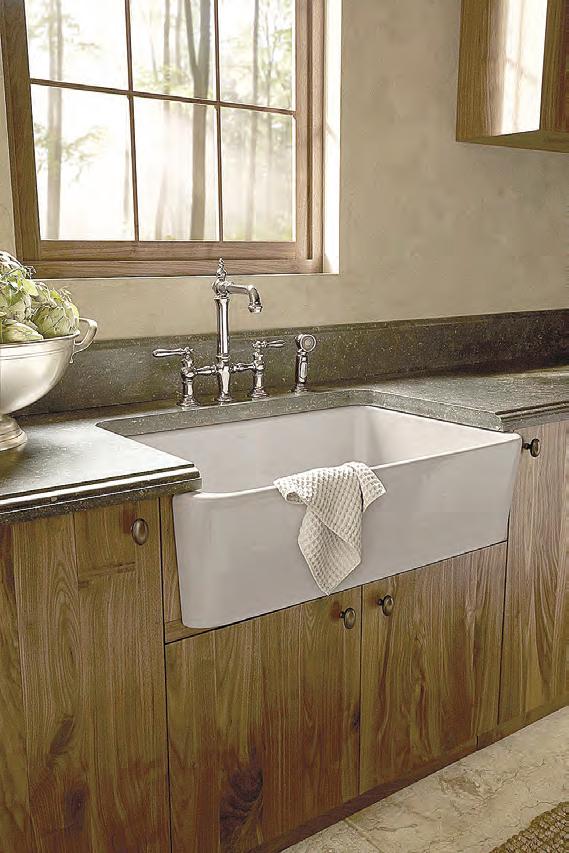
inspired hues. This collection is inspired by carefully curated iconic greens from the Kohler archives, brought back to life in current kitchen and bath products. Inspired by the beauty of the outdoors, these shades are perfectly suited for classic or contemporary designs, and will blend effortlessly with your existing decor:
• Fresh Green (1971) is a lively shade reminiscent of a spring garden, ideal for adding bright energy to kitchens and bathrooms.
• Aspen Green (1978) captures serene tones of mountain pines for a calming color that works as a neutral or makes a statement in any space.
• Teal (1987) is a deep, dramatic green/blue blend that infuses striking, natureinspired character into your design vision.
the quiet beauty of neutrals that can make an elevated statement in their own right.
The Artifacts Cast Iron Free Standing Bath in Dune is inspired by the charm of turnof-the-century homes, like a vintage treasure rediscovered but enhanced by the comforts of modern design – such as a gently curved rim for added neck support. You can also customize your Artifacts bath with a set of ornate ball-and-claw feet.
Creating a stunning focal point inspired by studio pottery, the Derring Oval Sink in Bourbon Rutile celebrates the beauty and authenticity of handcrafted ceramics. Each sink is finished with unique artisanal glazes that produce fascinating surface effects, with a hand-carved texture that accentuates the glaze’s subtle tonal variations.
If you’ve always wanted
house style, the streamlined apron-front Whitehaven Cast Iron in Truffle is perfect for remodeling projects. The SelfTrimming design requires only a rough cut to new or existing 30-inch standard cabinetry for simple installation and beautiful results. Crafted from enameled cast iron, the sink resists chipping, cracking or burning for years of beauty and reliable performance.
In exploring nature, people are drawn not only to the earthy neutrals that bring calm and familiarity to interiors, but also to the pops of green that breathe life into a space without overwhelming it.
With the Kohler Heritage Greens collection, you can transform your kitchen and bath using bold, nature-
Bringing greens into the kitchen or bathroom allows you to experiment with nature’s neutral hues that pair with a wide range of design aesthetics. Kohler’s Heritage colors showcase the versatility of green by offering a serene, calming atmosphere with Aspen Green and a deeper, moodier tone with Teal. Searching for a piece that draws inspiration from traditional furniture and architectural elements? The Memoirs Stately Pedestal Sink in Teal offers crisp, clean lines evoking the splendor of fine antiques. Similarly, the Memoirs Stately Toilet in Aspen Green features the elegant architectural look of the Memoirs collection along with vintage-inspired Stately design, combining performance with traditional style.
Neutral, nature-inspired colors and finishes can lead to grounded spaces that feel connected to the natural world, evoking a fresh, timeless appeal that’s versatile and welcoming. Come home to the colors of nature at Kohler.com.





